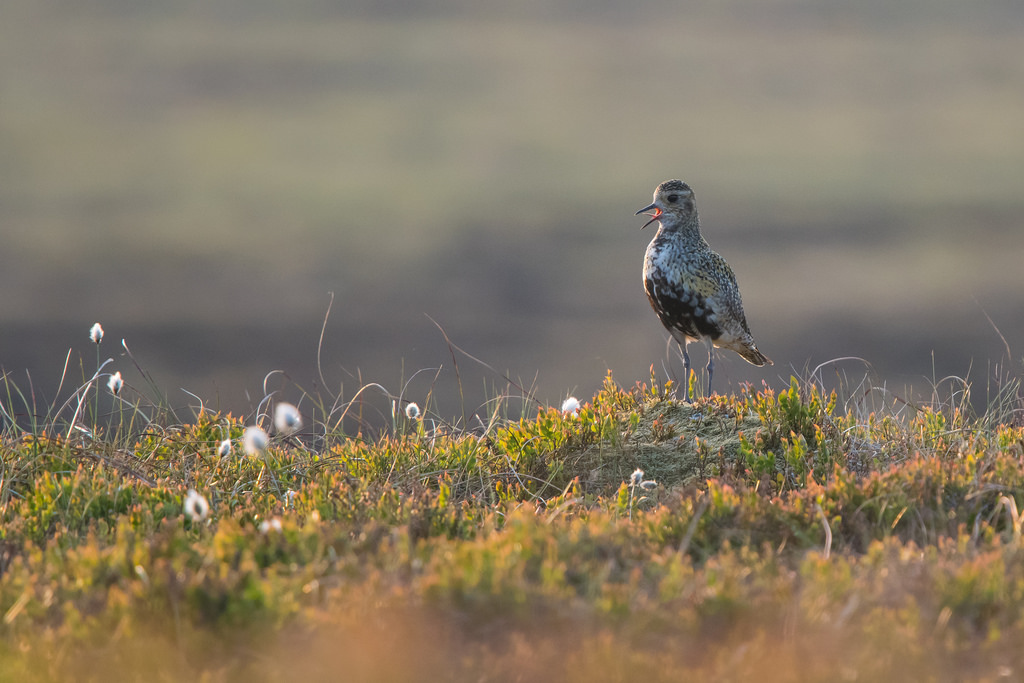
Tim writes: I really like smaller images of birds that show them in the context of their habitats. This Golden Plover was taken on remote blanket bog high on the Peak District moors where they are common breeding birds. You can see the Hare’s Tail Cotton-grass and Bilberry that is so characteristic of their breeding habitat. You can also see that it is giving its plaintive whistle which is familiar background music to a summer visit to the high moors. Although they breed on the moors and blanket bogs, but do most of their feeding in fields in the surrounding farmland. They also have an interesting division of labour between the sexes. Females incubate the eggs during the night, then go off to feed in fields as a single sex flock during the day time. Males take over incubation during the day and go off to feed on different fields at night. They do the same while chaperoning the young.
The scientific name is Pluvialis apricaria and it was Linnaeus who put them in the genus Pluvialis, which means relating to rain. In his native Sweden they were known as Rain Pipers (Regnpipare) because they were thought to call before rain, but there seems to be no link between plovers and rain. Apricaria means basking in the sun, probably because of the golden, spangled upperparts.
[registration_form]
Bibby had these birds travelling 25 miles to feed from their breeding areas in Wales and I have seen them cross the A66 having come down from Cross Fell which must be 10+ miles in direct flight. You may have their breeding areas under SSSIs but the knowlesge of these feeding areas in 21st century is a joke. Even on Geltsdale the feeding areas have changed in recent years due to chages in management. Where declines of this species occur especially in Wales, how much is due to the loss of these feeding areas?
Lovely picture Tim, one of the first of yours displayed here where I have managed an equivalent photo! Golden Plover is one of my favourite birds and the chick camouflage is both superb and beautiful too.